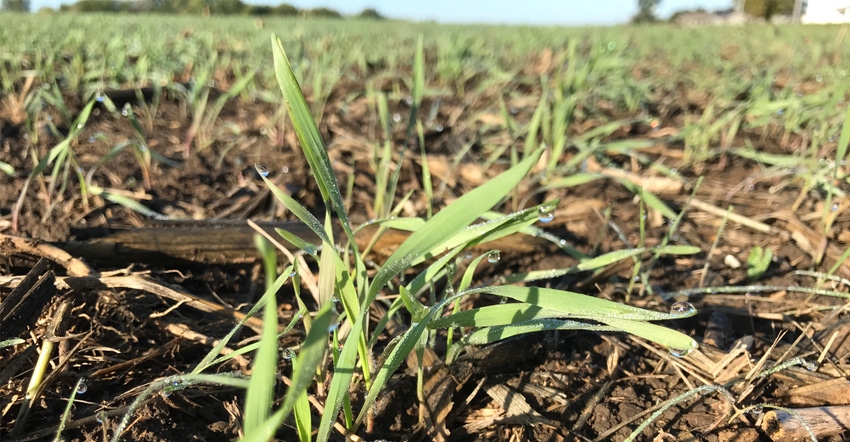
In this column, we will explore and understand different terms widely used in addressing greenhouse gas (GHG) emission mitigation and carbon sequestration. Often, those involved in the industry create confusion and inaccuracy with the language they use.
We want to cut through the clutter to define the terminology used for GHG offsets' rules and policies — so read on. Before discussing these terms, it is important to define carbon credit, which is calculated based on carbon-dioxide equivalent to limit the emission as mass equal to 1 ton of carbon dioxide per unit area (i.e., acre or hectare). Carbon credits considered as a permit or certificate allow the holder to emit greenhouse gases equivalent to CO2, equal to that amount. The issuance of carbon credits aims to reduce GHG emissions into the atmosphere.
Additionality. This is the most essential policy term used as a metric in determining the effectiveness of an offset strategy, practices or projects of GHG emission, and determining their quality and effectiveness. This term is used regarding whether a project, or system or practice, leads to GHG emission reduction, in addition to business as usual, or a baseline prior to project implementation. Additionality should be evaluated on a practice-by-practice basis and to determine barriers to achieving it.
Additionality is considered the only metric by which that practice or project results in a measurable reduction in atmospheric GHG.
It is widely understood that additionality, conceptually, is considered a determinant of whether a proposed activity will produce some "extra good" in the future relative to a reference scenario, which we refer to as a baseline. A good example of that in an agriculture system is no-till, leading to additional carbon sequestration and atmospheric CO2 removal over conventional tillage.
Baseline. A baseline is a core component of the GHG emission reduction and must be established to quantify a project’s reduction of greenhouse gas levels. The baseline is intended to demonstrate what GHG emission levels would have been in the absence of the emission reduction project or strategy.
Credible greenhouse gas emissions reductions can only be assessed if the baseline is an accurate and realistic reflection of the business-as-usual emissions scenario. Therefore, a baseline in the context of GHG offset is to measure the amount of good or harm produced by certain systems or practices, and associated activity in the absence of a set of policy interventions.
The baseline is identified by the necessary measures in the absence of specific policy intervention created by the offset program. Explicit and careful identification of policy intervention has been a missing key element in reaching consensus on more precise definitions of additionality and baseline.
Monitoring and verification. The other major factor in GHG emission offset is the ability to monitor and verify our carbon footprint. Therefore, reduction of GHG emission of a certain system or practice must be accurately quantified and verified.
Each project, system or practice must have a monitoring and verification plan specific to that project (i.e., regenerative ag) that defines how, when and by whom the quantification and verification will be done. To ensure proper quantification and verification methodologies, the M&V plan should be written with the help of experts familiar with the specifics of a project. Verification of emissions reductions must be done by an independent third party to ensure quality and confidence in the outcome.
Along with the independence of the verification process, there should be well-established national standards used in developing and implementing M&V plans.
Permanence. The concept, or term, of permanence refers to the level of stability of stored carbon and potential risk associated with reversal or loss of GHG back to the atmosphere.
For example, in agriculture systems, such as the implementation of regenerative agriculture practices that include no-till and cover crops, the effectiveness of such practices in sequestering carbon and the permanency of carbon offset depends highly on keeping these practices in place for the long term.
Similarly, for forestry-based offset projects, the main concern is that they have questionable permanence; if there is a wildfire, all the carbon sequestered in the forest will be released into the atmosphere, and the offset will be negated.
This is a term used to note that the offsets generated by a biologically based approach can have that risk, and the carbon gain can be reversed. There are general misunderstandings, especially associated with row crop practices, where some ignore the impact of even a minimum soil disturbance that can compromise the concept of permanence and potential reversal due to carbon oxidation and loss back to the atmosphere as CO2.
Leakage. The term leakage is defined as an increase or decrease in GHG emissions outside the boundaries of a farm or project’s emissions that occur because of the activity associated with management practices. A good example of leakage is the change in land use from one type of agriculture system to another. If a farmer decides to change the row crop operation to reforest their land, another area of land may be deforested to meet the demand for that farmer’s crop. An effective monitoring and verification plan should account for leakage properly over the life of an offset project.
Carbon credits ownership. This is a very important issue, especially for the seller. It is important that emission reductions generated by an offset program, project or farm must have clear and defensible rights to ownership of these carbon credits. These credits may only be allocated, awarded or counted one time, at any given time, against the GHG emissions of a single entity, project or farm in the case of agriculture practices. It is critically important that the farm that implements and owns the GHG reduction measures or practices is the owner of the offset credits.
These terms are critically important to understand and keep in mind prior to developing or executing a carbon credit contract. It is the responsibility of both the seller and the buyer to have that level of openness to secure a cost-effective and high-quality carbon credits offset program.
Al-Kaisi is a professor emeritus of soil physics (soil management and environment) in the Department of Agronomy, Iowa State University, Ames.
About the Author(s)
You May Also Like






